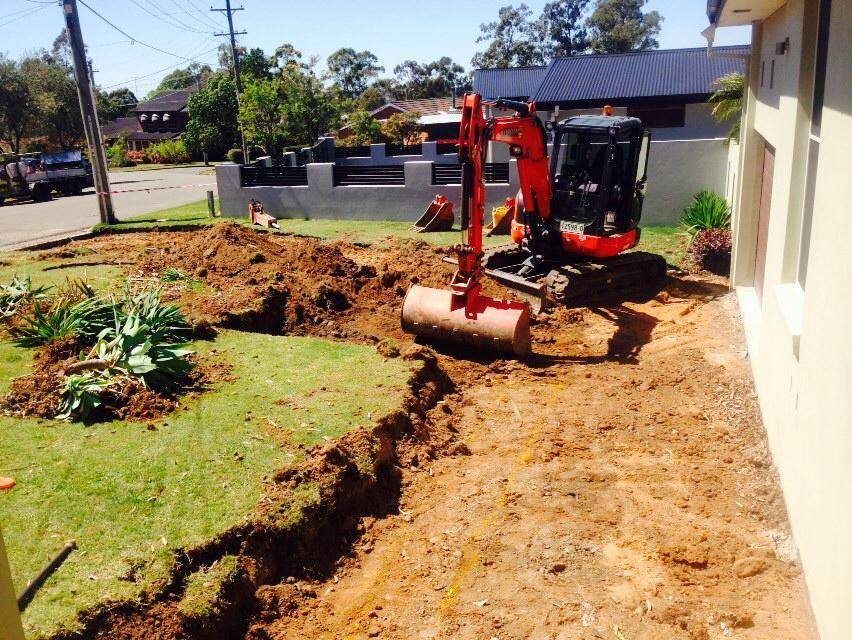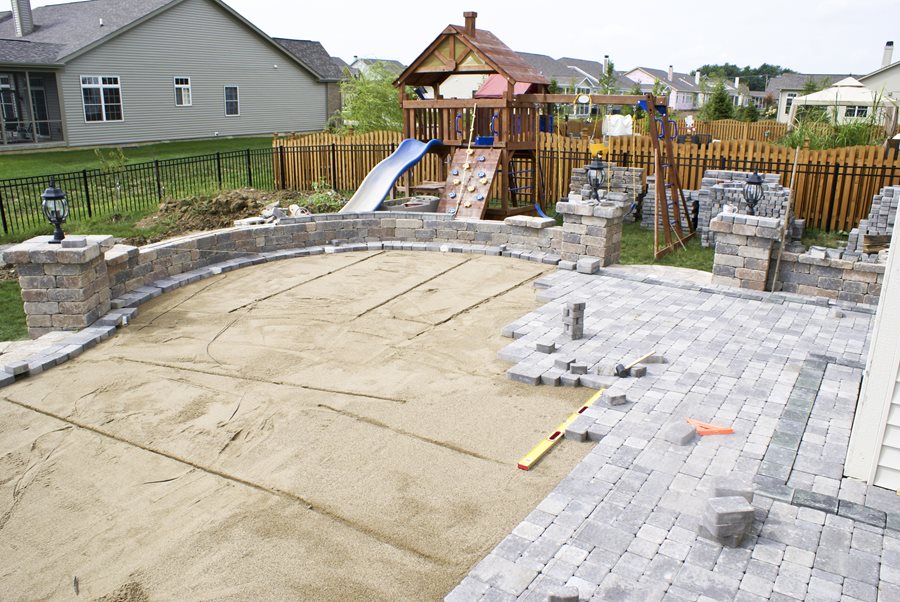
Pavers have been a staple of the hardscape industry for decades. In fact, even longer than that. For centuries, many cultures around the globe have used pavers. But, nowadays, do you need a permit for pavers? What are the rules and regulations around it?
There are many things to consider when planning a paver installation. The base of the installation must be as close to perfect as possible to ensure the longevity of the whole structure. And, since the development of said base involves digging, there are in fact some things you need to be mindful of.
So let’s talk about the aspects involving rules and regulations in a paver installation and how to make sure everything is correct.
Permit for Pavers: Do I Need One?
As a general rule of thumb, no, you don’t necessarily need a permit to install pavers.
However, it will involve digging, so you have to make sure you’re not going to hit any utility lines by accident.
In some regions, there are more strict regulations about that, so the best thing you can do is get in contact with your local authorities before making any plans.
That is specially true if you plan to add an outdoor fire element to your installation, like a fire pit or a cooking station. Cities, and sometimes even neighborhoods, have their own regulation regarding open fire burning.
So, once more, the best thing is to contact local authorities to know exactly what you can and can’t do. They can also tell you if there’s any risk of hitting utility lines and, if there is, how deep can you dig.
What to Watch Out For When Working With Pavers
Starting with the digging, you don’t want to overdo it.
If you’re planning on making a permeable paver installation, it can involve a lot more digging, so you want to be absolutely sure there are no utility lines underneath.
Whereas in a regular paver installation, you’ll rarely have to dig more than 10 inches, so there’s less chance of hitting utility lines.
Aside from digging, something else you want to be careful with is when cutting pavers.
Ideally, a paver installation should be planned to not need to cut any pavers at all, but we know that this is not always the case.
So if you’re going to cut any pavers using some kind of saw, make sure you’re performing a wet cut.
A wet cut is simply the practice of wetting the pavers as you cut them. Some saws are even prepared for that, but you can easily use a simple garden hose to do it.
Wet cutting is important, as it avoids the formation of dust while cutting pavers. This dust contains silica, which is a very harmful material. So harmful indeed that the cutting of pavers without the wet cutting technique is forbidden in some areas.
So, to make sure, it is best to always perform the wet cut with pavers. That is a two-person job, as one can carefully wet the pavers while the other one cuts it.
Permit for Pavers in Florida
We here at Eagle Pavers are hardscape professionals based on the Sarasota and Manatee counties, in Florida, so we can give you a first-hand experience to how things work around here as an example.
When it comes to digging, regular installations are not a big problem. We usually make an evaluation on site to make sure, but 10 inches are never enough to hit any utility lines.
As for permeable installations, especially the ones involving recyclable water systems, which involve a lot more digging, we sometimes have to follow the Chapter 556 issued by the Regulation of Trade, Commerce, Investments, and Solicitations.
The Law States:
Not less than 2 full business days before beginning any excavation or demolition that is not beneath the waters of the state, and not less than 10 full business days before beginning any excavation or demolition that is beneath the waters of the state, an excavator shall provide the following information through the system:
1. The name of the individual who provided notification and the name, address, including the street address, city, state, zip code, and telephone number of her or his employer.
2. The name and telephone number of the representative for the excavator, and a valid electronic address to facilitate a positive response by the system should be provided, if available.
3. The county, the city or closest city, and the street address or the closest street, road, or intersection to the location where the excavation or demolition is to be performed, and the construction limits of the excavation or demolition.
4. The commencement date and anticipated duration of the excavation or demolition.
5. Whether machinery will be used for the excavation or demolition.
6. The person or entity for whom the work is to be done.
7. The type of work to be done.
8. The approximate depth of the excavation.
Again, each State, City, County, and sometimes ever neighborhoods, have their own regulations, so get informed before committing to your installation.
Professional Help When Installing Pavers

So, to sum things up, things are usually simple, and you don’t need permits to install pavers. Still, it is important to contact your local authorities to make sure what you can and can’t do.
That is why it is so important to work close to professionals and, if possible, hire them to perform the installation for you instead of tackling it from a DIY perspective.
And if you happen to be around our area of activity, why not give us a call to help you?
You can contact us anytime at +1 941-210-4192 or email us at sales@eaglepavers.us. We would be happy to hear from you and help you with any paver need you might have.




